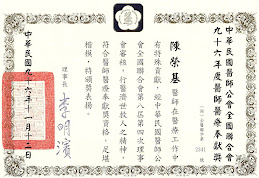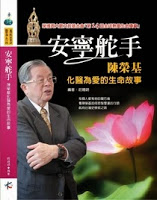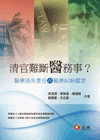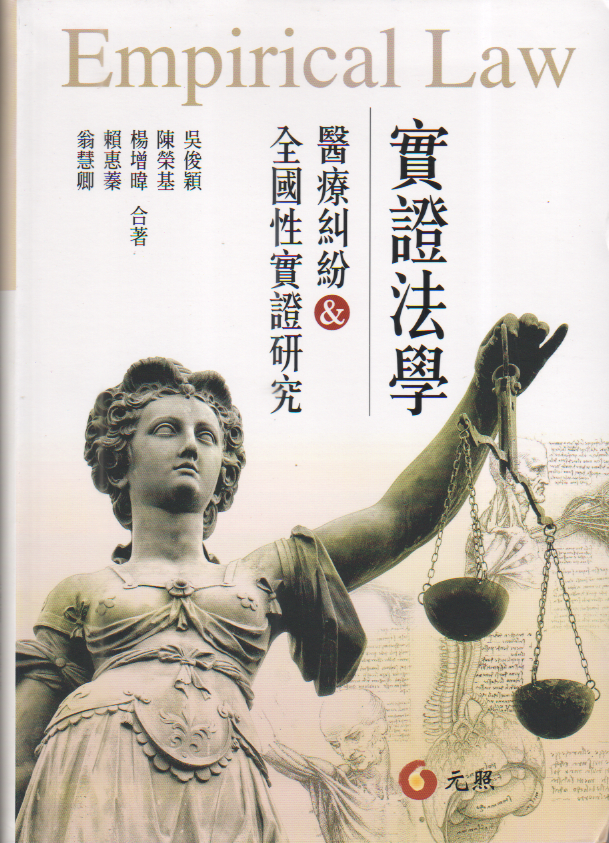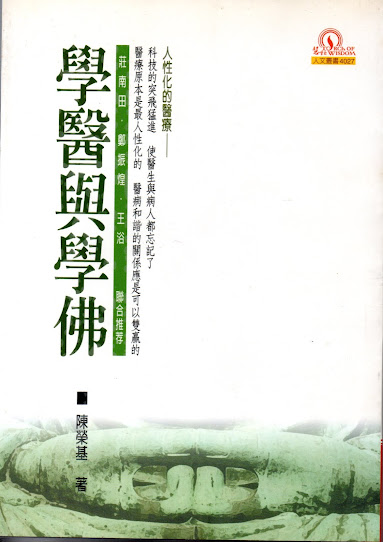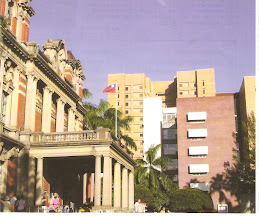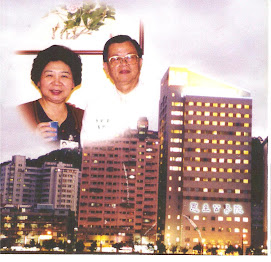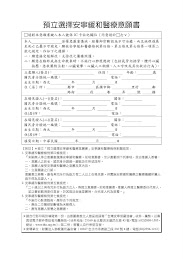A Personal Journey in Taiwan’s
Hospice Palliative Care Movement
Chen RC*.
Buddhist Lotus Hospice Care
Foundation, Taipei, Taiwan
(Be noted: Clicking at the References's title, the original article can be hyperlinked.)
*Corresponding
author: Rong-Chi CHEN, Buddhist Lotus Hospice Care Foundation,
4F,230,Sec3,Chengteh Rd,Taipei 10367,Taiwan, Tel: 886-2-25961212; E-mail: rongchichen@gmail.com
Abreviate title:
Hospice palliative care in Taiwan
Abstract
Hospice palliative care started in Taiwan
in 1990. Foundations of Christian, Catholic and Buddhist background and
associations with medical, nursing and various social background joined in
promotion of this modern humanistic
medical care. Government organizations, especially the Ministry of Health and
Welfare and the National Health Insurance (NHI) added policy momentum. Total
subsidies for hospice care was provided by NHI. Hospice Palliative Care Act (a
Natural Death Act) was enacted in 2000 and Patient Self-Determination Act
passed in 2016.Clinical Buddhist Chaplaincy training program was started in
1998 and exported to Japan in 2013. A Taiwan Coma Scale was proposed for
shortening of terminal suffering.
Key Words
Hospice care,Palliative
care, Hospice palliative care act, Patient self-determination act, Clinical
Buddhist chaplaincy, Taiwan coma scale, National health insurance, Good life,
Good death.
Full Paper
In 1967 Dr. Dame Cicely Saunders founded the
St. Christopher's Hospice in London, introducing active medical treatment and
care to relieve physical, psychological and spiritual suffering, and offering
palliative care during the last phase of patients' lives [1]. This humane form
of holistic health care has gradually spread around the world, reaching Taiwan
in 1990. The first hospice ward
was established by Dr. David CH Chung in the Christian Mackay Memorial Hospital
in Taipei County in 1990 [2-5]. Hospice home care was started by Ms. Co-Shi
Chao in 1990 [6]. The second hospice ward was established in 1994 at the
Catholic Cardinal Tien Hospital in Taipei County. In 1994 the author was
invited by the Christian Hospice Foundation of Taiwan to visit a few leading
hospices in Japan to learn more about the management.[2]. In 1995 the author
opened a palliative ward at the National Taiwan University Hospital in Taipei
City. In 1995 Buddist Tzu Chi Hospital in Hualien (eastern Taiwan) opened a hospice
ward.Thus hospice services gradually spread around Taiwan.
Foundations and Societies
In 1990 a Christian Hospice Foundation of
Taiwan was established [7]. In 1993
Catholic Sanipax Socio-Medical Service & Education Foundation (Kung Tai) was
found [8].In 1994 the author started the Buddhist Lotus Hospice Care Foundation
(Lotus Foundation)[9]. The cooperation of these 3 religious organizations
became the major momentum of Taiwan’s hospice movement.
Taiwan Hospice Organization was born in
1995[10]. The author became it’s second president from 1999 till 2003. Taiwan
Motor Neuron Disease Association joined in the hospice movement in 1997[11]. In
1999 Taiwan Academy of Hospice Medicine was organized by physicians interested
in hospice care[12]. Then Taiwan Association of Hospice Palliative Nursing in 2005[13].
In 2007,Taiwan Association of Clinical
Buddhist Studies was organized by persons participated in promotion of
clinical Buddhist chaplaincy[14].
Governmental support and impact on policy [15]
In 1995, the Department of Health(DOH)(later
promoted as Ministry of Health and Welfare, MOHW) organized a taskforce to
develop hospice palliative care.In 1996, the DOH declared that providing
palliative care, including do-no-resuscitation (DNR), in terminal care is
appropriate and legally justified.
In 1996, the National Health Insurance(NHI)started
to include the hospice home care in the funding program.Since 2000, NHI
subsidized hospice in-patient care, with per capita and per diem program.
In May 2003, “Cancer Control Act” was
promulgated. In this law, “Availability of hospice service for terminal cancer
patients” is listed as one of the 5 major tasks of cancer control.
In 2004, the DOH started a pilot study in providing
hospice combined care to let the terminal patients to be cared by his/her
original physician and hospice team together at the original ward service.
In 2005, the DOH published the “National
Cancer Control Project 2005-2009”. In the project, the provision of quality
hospice palliative care is included as a part of the integrated cancer control
and care. The aim was to increase the palliative care coverage rate to 50% of
cancer death. Since 2015, hospice combined care was subsidized. Gradually, hospice
palliative care was also encouraged and required by the Taiwan Joint Commission
on Hospital Accreditation when the author was surveyor and consultant to it.
Besides terminal cancer patients, in 2009,
the NHI started to pay for hospice care for terminal patients suffering from
all major organ failures (such as brain, heart, lung, liver or kidney
failures). Patients suffering from amyotrophic lateral sclerosis and AIDS were
also covered.
Legal supports in hospice care
In 2000, Taiwan’s Natural Death Act was
passed with the name “Hospice Palliative Care Act”[16,17]. In Article 1, “The
Hospice Palliative Care Act is specifically stipulated to respect terminal
illness patients’ will on the medical treatment, and protect their right.” In Article 4,“Terminal
illness patients may write a letter of intent for the choice of Hospice
Palliative Care (HPC) or Life Sustaining Treatment (LST). In Article 5,“A
person with age of twenty years or above and have the legal capacity may
prewrite such letter of intent referred in article 4.”Thus our people have the
legal right to withhold cardiopulmonary resuscitation (CPR), i.e. to choose DNR
and the right to withdraw futile CPR, such as withdrawal of mechanical
ventilator. In Article 6-1, “With the consent expressed in the letter of intent
by decision maker or the medical surrogate agent as set forth in the article 4
paragraph 1 or article 5, the central competent authority (DOH/MOHW) shall note
this will in the National Health Insurance certificate (hereinafter “NHI
card”). The NHI card is routinely used by every patient in asking for medical
care or consultation in any clinic or hospital. The author had the privilege of
having his NHI card as the first one to include this DNR intent.
In January 2016, “Patient Self-Deterrmination
Act” was enacted, to be effective 3 years later[18]. In Article 3 of this Act,
the Life Sustaining Treatment (LST) is defined as the following measures: Any
medical and nursing measures which can prolong the life such as cardiopulmonary
resuscitation (CPR), artificial ventilation, mechanical life sustaining system
(such as ECMO), blood substitutes, special treatment for specific diseases, for
example, chemotherapy, dialysis, antibiotics for fatal infections, artificial
nutrition and artificial liquid feeding, etc. In Article 13, the patient can
ask for withholding or withdrawal of whole or part of the life sustaining
treatments if he/she is 1. A terminal patient, 2. In irreversible comatous
state, 3. In persistent vegetative state, 4. In severe dementic state, 5.
Patient is in intolerable pain, incurable disease without adequate solution
under the current medical standard. The above items must be confirmed by 2
specialists and Item 5 must be confirmed by consultation with hospice team[19].
In promotion of the concept of hospice
care the author tried to educate the public, “Filial duty and love should find its
expression in being with the family member at the end of his/her life, and in
encouraging acceptance of disease, quiet life in his last days and peaceful
passing.”[3] and to educate the physicians, “Where it is unavoidable, the death
of a patient is not a medical failure. Not being able to facilitate a peaceful
and dignified demise is, however.”[3]
Clinical Chaplaincy in Hospice Care
In the Catholic and Christian tradition,
many chaplains received some medical or nursing training before they started
their pastoral role. These chaplains are competent in participating in hospice
care. However, there was no such tradition in the Buddhist history. In Taiwan,
about 70% population are Buddhist or Taoist believers. In 1998, The Lotus
Foundation started a Clinical Buddhist Chaplaincy (CBC) training program at the
Palliative Unit of National Taiwan University Hospital. This include a 70-hour
classroom courses and 80-hour bedside practice[20]. Up to the present we have 129
nuns or monks participated in training, 86 finished bedside training, 56
completed the course (including 3 Catholic nuns). At present,34 CBCs were
serving in 41 hospices. They are successfully participating as active team
member of hospice ward care, combined care and home care. Since 2013,this CBC
program was exported to Japan through Japan’s Zenseiky Organization[21-22].
Taiwan Coma Scale [23]
Coma or unconsciousness is the result of
insult to the brain. It is qualitatively described as mild, medium or deep coma
. The Glasgow coma scale (GCS) proposed by Teasdale and Jennett was widely used in Taiwan for making
quantitative measure of coma. However, the GCS made the lowest scale to 1 for
those “none" responses in eye , speech and limb movement . The total
lowest scale is 3. The family in Taiwan usually felt that there might be some
hope for the scale of 3, and continued to wait for miracle to occur. It costed
the patient to suffer from the continual torture of the futile medicine. Chen suggested
to establish a Taiwan Coma Scale[23] which would make the lowest point of the "none"
response to 0 for each category. When the scale reaches 0, it might be easier
to persuade the family members for discussion about withdrawal of the futile
life sustaining treatment. Hope this will further improve the quality of
hospice care in Taiwan.
Taiwan’s Current Status of Hospice Palliative Care
Up
to present, Taiwan has 57 hospice wards for the population of 23
millions. 93 hospitals provide hospice home care ,141 hospitals providing hospice
combined care, and 155 hospital providing community hospice care, covering
almost all cities and counties. The author is participating in planning of
construction of a Buddhist Taichung Chengte Hospice, a 90-bed hospital built
for hospice care in the central part of Taiwan[24].Hope this first independent
hospice (not as part of a general hospital) in Taiwan will become a St.
Christopher’s Hospice of Asia, with special emphasis on Buddhist local style
hospice care and training center of Clinical Buddhist Chaplaincy.
Although we are not satisfied with our
result, the international survey of the quality of death and also quality of palliative
care by the Lien Foundation ranked Taiwan as the 14th /40 in the
world in 2010 and 6th /80 in
2015. Taiwan ranked the first in Asian Countries in both times[25-26]. We will
continue to improve our quality of care and coverage of hospice care in Taiwan.
In joining our colleagues in promotion of of
hospice palliative care, the author was honored to receive a Global Love of Lives
Award of Chou Ta Kuan Foundation in 2010 as Terminal Care Anchor[27].
In 2016, the Health, Welfare &
Environmental Foundation of the Legislative Yuan (Taiwan’s Senate) and the
Ministry of Health & Welfare gave the author a Medical Service and
Dedication Award to express appreciation to the entire hospice care teams’contribution
to Taiwan’s holistic medical care [28].
Finally, the author wishes to express his
deep thanks to his family members, teachers, classmates, friends, colleagues
for their continual nurture, teaching, guidance, support and help throughout his
life, with special thanks to all members in the hospice care promotion
teams and all the patients and their families who accepted the care. Life is
the best gift and good death is the most beautiful blessing.[29].
May
all the sentient beings of the world have a good life and peaceful departure of
this life and smooth travel to a new life in the heavenly kingdom of God or
pure land paradise of Amitabuddha.
References
5. Chen RC. (2009) Humanism in terminal care.
In Tai CT, Lee MB (ed). Medical Humanities. Taipei: Ministry of Education. Ch
7,Pp 97-109. (in Chinese)
6. Chao CS. (2007). Physician, Life and Death.
Taipei: Bo Ping Culture. (in Chinese).
20.Lotus Foundation. (2009). Clinical Buddhist Chaplains
Practicing in the Hospitals. Lotus Blossom DVD.
29.Lotus Foundation.(2013). Time for Hospice Care.


























































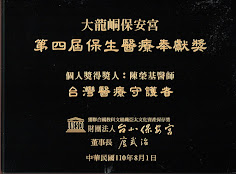

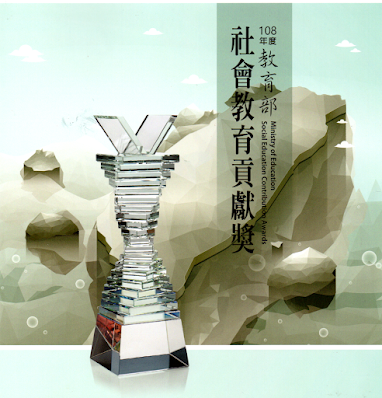

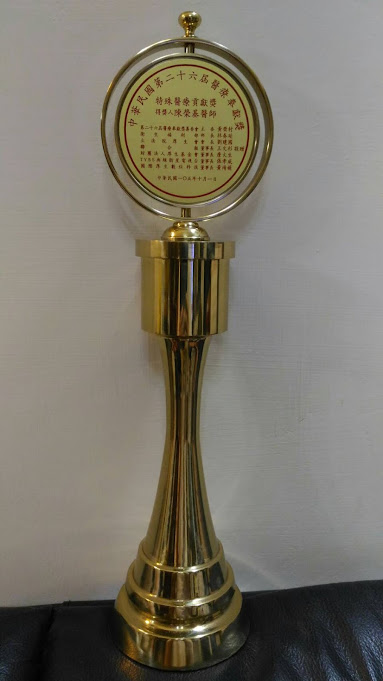
![2015周大觀基金會熱愛生命獎章<[請點下圖連署支持全責護理]>](http://3.bp.blogspot.com/-0XE7vtBmB6Y/VijWC6eVOtI/AAAAAAAAN84/lZpfif8QS5k/s1600-r/Fcover_final.jpg)

